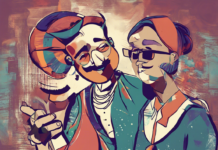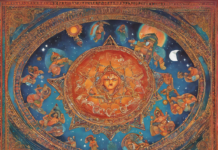In today’s digital age, where people are constantly bombarded with information and stimuli, the humble GIF (Graphics Interchange Format) has become a powerful and popular medium of expression. These bite-sized, looped animations have the ability to convey complex emotions, ideas, and messages in a matter of seconds, making them a versatile and engaging form of communication on the internet. From humorous memes to stunning cinemagraphs, GIFs have evolved into a unique art form that plays a significant role in online culture.
The History of GIFs
The GIF format was introduced by CompuServe in 1987, making it one of the oldest image formats still in use today. Originally designed for efficient data transfer, GIFs gained popularity in the early days of the internet due to their compressed file size and support for animations. However, it wasn’t until the rise of social media platforms like Tumblr and Twitter that GIFs truly found their place in online communication.
The Art of GIF Creation
Creating a GIF can be a simple or complex process, depending on the desired outcome. There are various tools and software available that allow users to make GIFs from images, videos, or even live recordings. Artists and designers often use Adobe Photoshop or specialized GIF-making software to craft intricate and visually stunning animations. On the other hand, casual users can easily create GIFs using online platforms like Giphy or Tenor, which offer user-friendly interfaces and editing options.
The Power of Visual Storytelling
One of the main reasons why GIFs have become so popular is their ability to convey emotions and narratives in a visually compelling way. Whether it’s a reaction GIF of a famous celebrity or a touching moment from a movie, these animations have the power to evoke strong feelings and connections with viewers. Brands and marketers have also taken notice of the effectiveness of GIFs in capturing audience attention and have integrated them into their social media strategies for engagement and brand promotion.
GIFs in Pop Culture
The impact of GIFs on popular culture cannot be overstated. From iconic scenes in movies and TV shows to viral moments captured in real life, GIFs have become a ubiquitous part of online discourse. Memes, which often take the form of GIFs, have the ability to spread like wildfire across the internet, influencing trends and shaping digital conversations. The “gification” of culture has blurred the lines between high and low art, as GIFs are used not only for entertainment but also for artistic expression and social commentary.
GIFs and Digital Communication
In an era where attention spans are short and information overload is common, GIFs offer a quick and engaging way to communicate online. Whether it’s adding a touch of humor to a text message or expressing support for a friend, GIFs have become an integral part of digital communication. Emojis and stickers may convey emotions, but GIFs provide a dynamic and multifaceted visual element that transcends language barriers and adds depth to online interactions.
The Future of GIFs
As technology continues to evolve, the future of GIFs looks promising. With advancements in augmented reality and virtual reality, we can expect to see more interactive and immersive GIF experiences. Additionally, the integration of GIF search engines into messaging apps and social media platforms has made it easier than ever for users to discover and share their favorite animations. The popularity of GIFs shows no signs of waning, as they continue to captivate audiences and inspire creativity in the digital realm.
FAQs
- What is the difference between a GIF and a video?
-
A GIF is a short, looped animation that plays automatically without sound, while a video is a longer, continuous motion with audio.
-
Are there copyright issues associated with using GIFs?
-
It is important to be mindful of copyright when using GIFs created by others. It is advisable to create your own GIFs or use royalty-free animations to avoid legal issues.
-
How can I create my own GIFs?
-
There are various online tools and software like Giphy, Tenor, or Adobe Photoshop that allow users to create GIFs from images, videos, or clips.
-
Can GIFs be used for marketing purposes?
-
Yes, GIFs are commonly used in marketing campaigns to engage audiences, communicate brand messages, and create shareable content on social media.
-
What are cinemagraphs, and how are they different from regular GIFs?
-
Cinemagraphs are a type of animated GIF that contains subtle motion in a still image, creating a mesmerizing effect. They are often used for artistic and visually striking purposes.
-
Do GIFs impact website loading times?
-
Since GIFs are compressed image files, they generally have a smaller file size compared to videos, which can help in faster loading times. However, using multiple GIFs on a webpage can affect loading speeds.
-
Are there any ethical considerations when using GIFs in communication?
-
It is important to consider the context and appropriateness of GIFs when using them in communication, especially in professional or formal settings where humor or animated visuals may not be suitable.
-
Can GIFs replace traditional forms of communication?
-
While GIFs have become a popular and effective mode of online communication, they are unlikely to completely replace traditional forms of communication like text or voice messages, which convey more nuanced and detailed information.
-
What role do GIFs play in social media engagement?
-
GIFs are highly shareable and engaging content on social media platforms, allowing users to express themselves creatively, interact with others, and increase visibility for brands and influencers.
-
How have GIFs influenced internet culture and trends?
- GIFs have become a central part of internet culture, influencing memes, trends, and digital communication. They serve as a visual language that transcends borders and demographics, shaping the way we express ourselves online.








